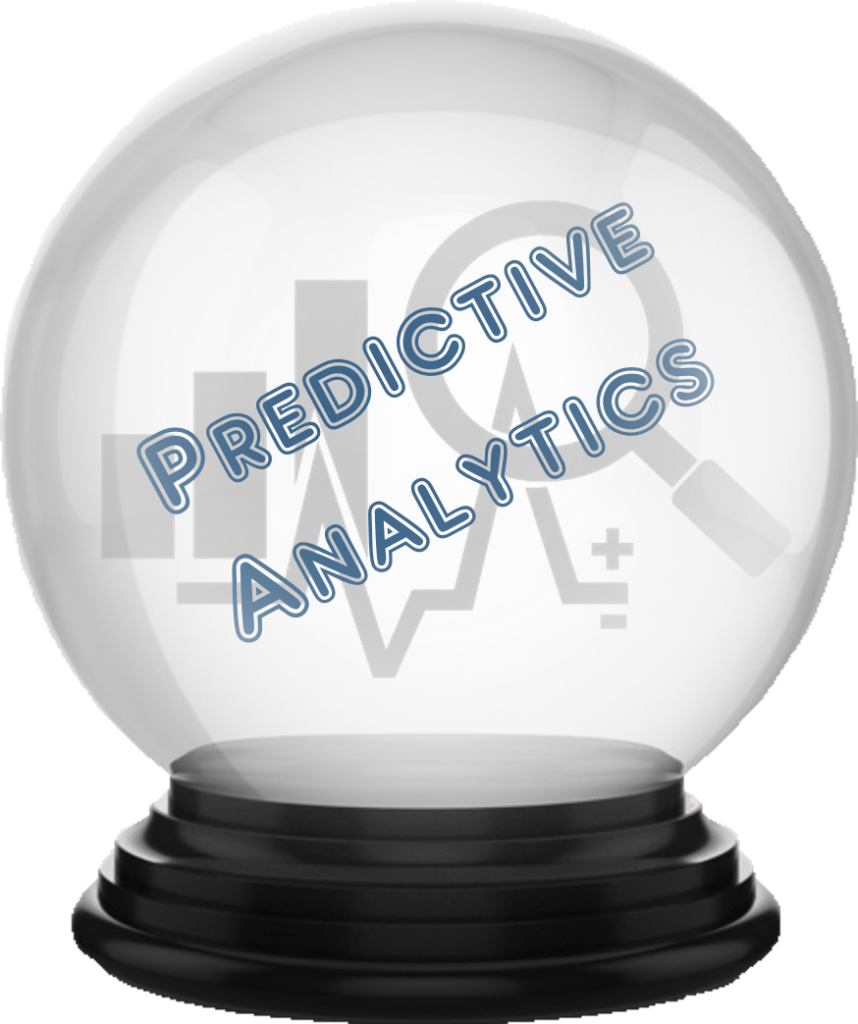How often have you wished you could glance into a crystal ball and see the future? If we could know the outcomes of today’s decisions, we would be better equipped to make them. The late Mahatma Gandhi once said, “The future depends on what you do today.” He was correct. Business leaders must constantly make decisions and the better decisions they make the better the outcomes. Bain analysts, Michael C. Mankins and Lori Sherer (@lorisherer), assert if you can improve a company’s decision making you can dramatically improve its bottom line. They explain, “The best way to understand any company’s operations is to view them as a series of decisions.”[1] They add, “We know from extensive research that decisions matter — a lot. Companies that make better decisions, make them faster and execute them more effectively than rivals nearly always turn in better financial performance. Not surprisingly, companies that employ advanced analytics to improve decision making and execution have the results to show for it.”
One of the new tools available to decision makers is predictive analytics. Leveraging predictive analytics is as close as business leaders will come to having a crystal ball. Gracie Myers, a researcher with Research Optimus, writes, “Predictive analytics is being applied toward all facets of business operations and processes to help anticipate events, avoid risks, and create solutions. By forecasting future supply chain and logistical events, companies can gain a competitive advantage and prevent monetary loss due to inaccurate stocking, and mismanagement of goods, deliveries, and time.”[2] Lorrie Griffith (@theshelbyreport), editor of The Shelby Report, explains the crystal ball analogy can be taken too far. She writes, “Ask someone to draw ‘predictive intelligence’ as if they were playing a game of Pictionary. … The result could be a crystal ball, tarot cards or some other talismans associated with a fortuneteller.”[3] This depiction, she explains, is not “helpful when assessing the potential value of predictive analytics.” Crystal ball comparisons imply predictive analytics can see the future; however, Griffith notes, predictive analytics rely on historical data and are, therefore, not very good at predicting unexpected events. Nevertheless, for many routine processes, predictive analytics can play an important business role. Edward Huskin, a data and analytics consultant, explains, “The technology has been around for decades now, with various statistical models in use as early as the 80s to predict the stock market. Only recently, however, have the powers that be come together and made an undeniably strong case for wider adoption of the once unstable technology.”[4]
The benefits of predictive analytics
Myers notes, “Predictive analysis is used to make forecasts by reading algorithms based on both current and historical data. Organizations can modify how and where they use resources to better prepare for future events. It creates a framework for connecting the dots between trends, patterns, and associations in data to help businesses respond proactively to future developments.” She goes on to explain a bit about how predictive analytics works. She writes, “Predictive analytics uses a mixture of analytics methodologies, combined with automated tools and technologies, to find patterns within data, and goes one step further to anticipate the likelihood of specific future events. Predictive analytics encompasses the following: Predictive modeling; text analytics; real-time scoring; ad-hoc statistical analysis; and data mining. Through intelligent application of these predictive analytics models, companies can prevent unnecessary expenses and errors related to their supply chain and logistics processes.”
Timothy King (@BigData_Review), Senior Editor at Solutions Review, reports, “According to new research commissioned by MHI and Deloitte, predictive analytics is quickly becoming a staple technology for the supply chain. The 2019 MHI Annual Industry Report polled more than 1,000 industry leaders, with most hailing from manufacturing and supply chain industries. 90 percent of those respondents believe that predictive analytics will provide a major impact to the supply chain over the next ten years.”[4] Some of the benefits provided by predictive analytics include:
Inventory management: Griffith notes predictive analytics provide store owners “a sixth sense” when it comes to ensuring shelves are stocks, prices are updated, and when products may have to be ordered in bulk from vendors. Myers adds, “Retailers and distributors can prepare months in advance to help their suppliers plan to inventory and shipments based on customer demand and buying behavior.” Systems, like the Enterra Intelligent Inventory Management System™, are designed to help retailers and manufacturers better manage inventory fluctuations.
Transportation management: Myers writes, “Supply chains depend on fixed lead time and uncertainty for factors such as ocean shipping, can be addressed by predicting future disruptions.”
Predicting patterns in user behavior. Huskin observes, “Every customer is unique but they tend to experience the sales process in pretty much the same way. … Predictive analytics gives businesses an avenue for predicting a visitor’s next move. … Using such data, a company can attempt to reach a conclusion regarding why certain users drop off at certain times while others convert. … A company may also be able to map certain correlations to each other, such as general location and conversion rates.” Myers adds, “Organizations can obtain market insights about customers, suppliers, and trading partners, as well as seasonal buying patterns and consumer forecasts to make quicker more intelligent decisions.” This is exactly what the Enterra Shopper Marketing and Consumer Insights Intelligence System™ was designed to do.
Product and content placement: Myers writes, “Organizations can better prepare for short-term behavioral changes that affect supply chain and logistics such as news, weather, shortages, and manufacturing promotions. By utilizing predictive analytic models to detect unexpected conditions, they can better adjust site merchandising in response to specific time-sensitive [scenarios].” The Enterra Category Management Intelligence System™ was designed to help brands understand changing retail conditions.
Improved B2B personalization: Myers notes, “Predictive analytic models can be used to ensure that the correct seasonal products are delivered to customers based on geographical region. A model can detect changes that may necessitate a modification in merchandising per geographic location.” Geographical segmentation is just one type of segmentation. Huskin notes, “Segmentation is the practice of dividing users into different categories based on factors such as age, shopping habits, location and behavior on your site. … Segmentation wasn’t invented thanks to the sudden availability of data, and traditional segmentation relies on historical data in the same way predictive analytics does. However, traditional segmentation tends to invest more time on old knowledge and not so much up-to-date information. The result is that the sales process becomes less effective — stuck in the past. By relying on predictive analytics, or more precisely, the data that underlies it, users can be divided into different groups much more accurately. This then enables precise marketing messages based on demographics or even location to be sent to potential customers.”
Dynamic pricing and lead scoring: According to Huskin, “Most modern companies don’t tend to have a fixed pricing model that can be used across the board. Pricing models are made to adapt to factors, such as location, the volume of purchase and customer lifetime value.”
Predict supply and demand: Myers writes, “Predictive analytics ensures that there are less waste and on-time deliveries during pinnacle demand times.”
Predictive maintenance: Myer notes, “This is extensively used in supply chain logistics in a technology-focused way, particularly in operations that focus on picking and packing, and across fleets of transport ships and trucks.”
Supply chain risk management: Martin Clothier, Technical Director at Columbus UK, notes, “There a realistic opportunity here for businesses to not only react to events outside of their control, but use them to gain a competitive edge. … It all comes down to the ability to use predictive analytics to manage supply chain risk.”[6]
Concluding thoughts
Myers concludes, “Predictive analytics is giving organizations the capability to improve key performance drivers in supply chain and logistics. Everything from delivery management, costs of goods, order lifecycle, movement of goods, shipping and warehousing costs, inventory management, and customer service can be forecasted through predictive analytic models.” King adds, “The supply chain isn’t the only vertical seeing increased interest in predictive analytics.” Although predictive analytics may not be a crystal ball, the above discussion makes it clear businesses will find predictive analytics are useful in a number of ways.
Footnotes
[1] Michael C. Mankins and Lori Sherer, “Creating value through advanced analytics,” Bain Brief, 11 February 2015.
[2] Gracie Myers, “How Predictive Analytics Is Benefitting Supply Chain and Logistics Industry,” Research Optimus Blog, 19 December 2017.
[3] Lorrie Griffith, “A Simple Way to Look At Predictive Analytics Vs. Artificial Intelligence,” The Shelby Report, 31 May 2019.
[4] Edward Huskin, “How Predictive Analytics is Helping Organizations to Increase Sales,” Datafloq, 26 September 2019.
[5] Timothy King, “Predictive Analytics is Becoming a Staple Technology for the Supply Chain,” Solutions Review, 19 April 2019.
[6] Martin Clothier, “Keep your business on track with predictive analytics – the next best thing to a crystal ball,” Tech Native, 26 August 2019.





